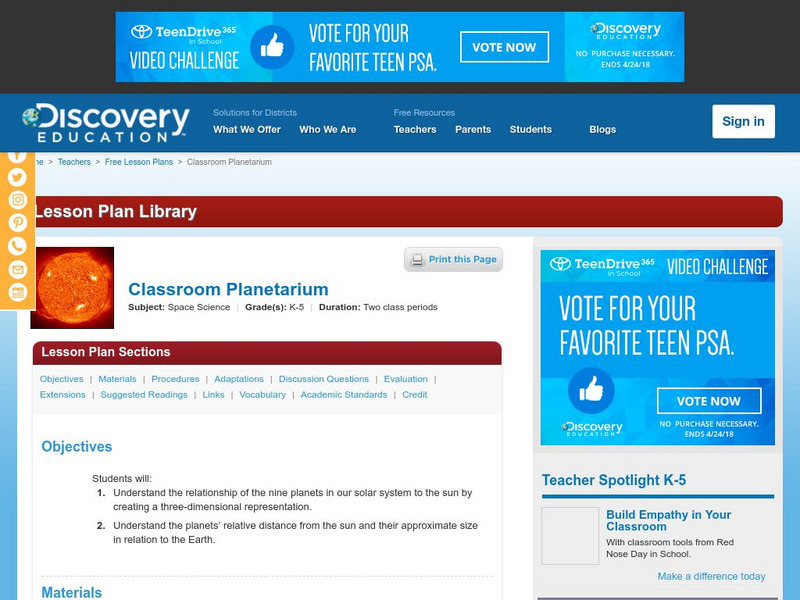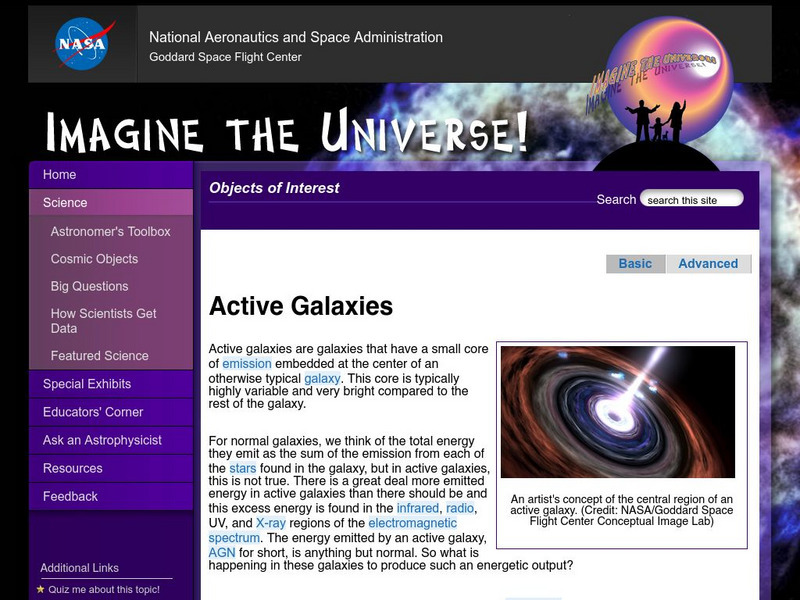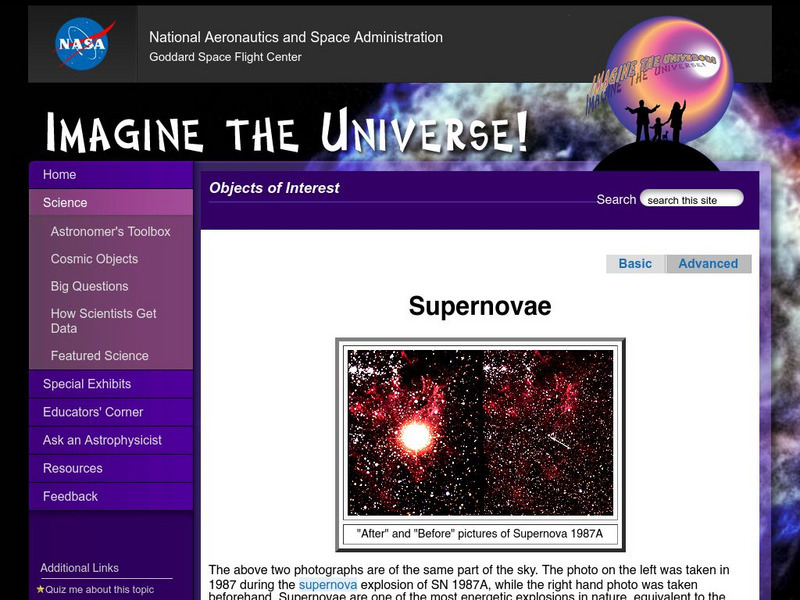NASA
Viewing the Violent Universe: What Are Gamma Rays?
The universe produces a broad range of light, only a fraction of which is visible to our eyes. Gamma rays are nonvisible light, which also includes x-rays, ultraviolet light, infrared radiation, and radio waves.
NASA
Nasa: History of Venus Transit
NASA site recounts the history of the Venus Transits that have occurred over the past centuries and the various descriptions astronomers have written about them.
Other
Astrolabe.org: The Astrolabe
A description of the ancient astrolabes and how they worked. Provides information about definitions, collections, and also includes photos.
Other
Htwins: The Scale of the Universe
Understand the power of tens, with this interactive scale of the universe that takes you from the microscopic to macroscopic. Click on the objects to learn more about their size and properties.
Discovery Education
Discovery Education: Classroom Planetarium
Create a classroom model of the solar system while teaching about relative size of all the planets, and each planet's distance from the sun.
US Department of Labor
Bureau of Labor Statistics: Physicists and Astronomers
Discover the work of physicists and astronomers. This resource includes the job outlook and salary expectations.
Other
Teach With Movies: Lesson Plans Based on Shorts and Clips
Links to many video-clip based lessons in the areas of health, English language arts & drama, mathematics, music, biology, earth science, inventions, astronomy, physics, chemistry, U.S. history and culture, and world history and...
NASA
Nasa: Imagine the Universe: Supernovae (Basic)
A detailed description of a supernova developing from a single massive star. There is a quiz, related links, animation, lesson plans, and an FAQ sheet available also.
NASA
Nasa: Imagine the Universe: Active Galaxies and Quasars
Describes quasars as being classified within the category of an active galaxy. A description of the emergence of high-energy. Definitions of key words are provided.gamma-ray quasars as an important component of the gamma-ray sky.
NASA
Nasa: Imagine the Universe: Supernovae Remnants
A brief description of supernova remnants with many embedded links to help define terms used in the description. The specific topics are age and the importance of remnants to us and the types. Definitions of key words are provided.
NASA
Nasa: Imagine the Universe: Supernovae (Advanced)
Supernovae are divided into two basic physical types, including a description of supernova types and how they are classified based on the existence of hydrogen spectral lines. Definitions of key terms are provided.
American Association of Physics Teachers
Com Padre Digital Library: Open Source Physics: Superior Ptolemaic Model
A simulation illustrating Ptolemy's geometrical system of explaining the varying speeds and directions of the planets, sun, and moon.
American Association of Physics Teachers
Com Padre Digital Library: Open Source Physics: Inferior Ptolemaic Model
This simulation offers an illustration of Ptolemy's orbit for an inferior planet.
Discovery Education
Discovery Education: Lesson Plans Library K 5
This resource presents a lesson plan library which holds hundreds of lesson plans organized by grade level and subject area. Often rooted with an Internet research piece, each lesson plan contains specific objectives, procedures,...
American Association of Physics Teachers
Com Padre Digital Library: Open Source Physics: Equatorial Coordinates Model
Using equatorial coordinates, observers will examine the position of a star over the course of the night sky in this simulation.
American Association of Physics Teachers
Com Padre Digital Library: Open Source Physics: Solar and Lunar Eclipse Model
Experience the simulation of both solar and lunar eclipses to understand why these eclipses do not occur monthly.
Other popular searches
- Astronomy and Space Science
- Space Science Astronomy
- Science Astronomy Stars
- Earth Science Astronomy
- Science Astronomy Graphing
- Life Science Astronomy
- "Astronomy and Space Science














